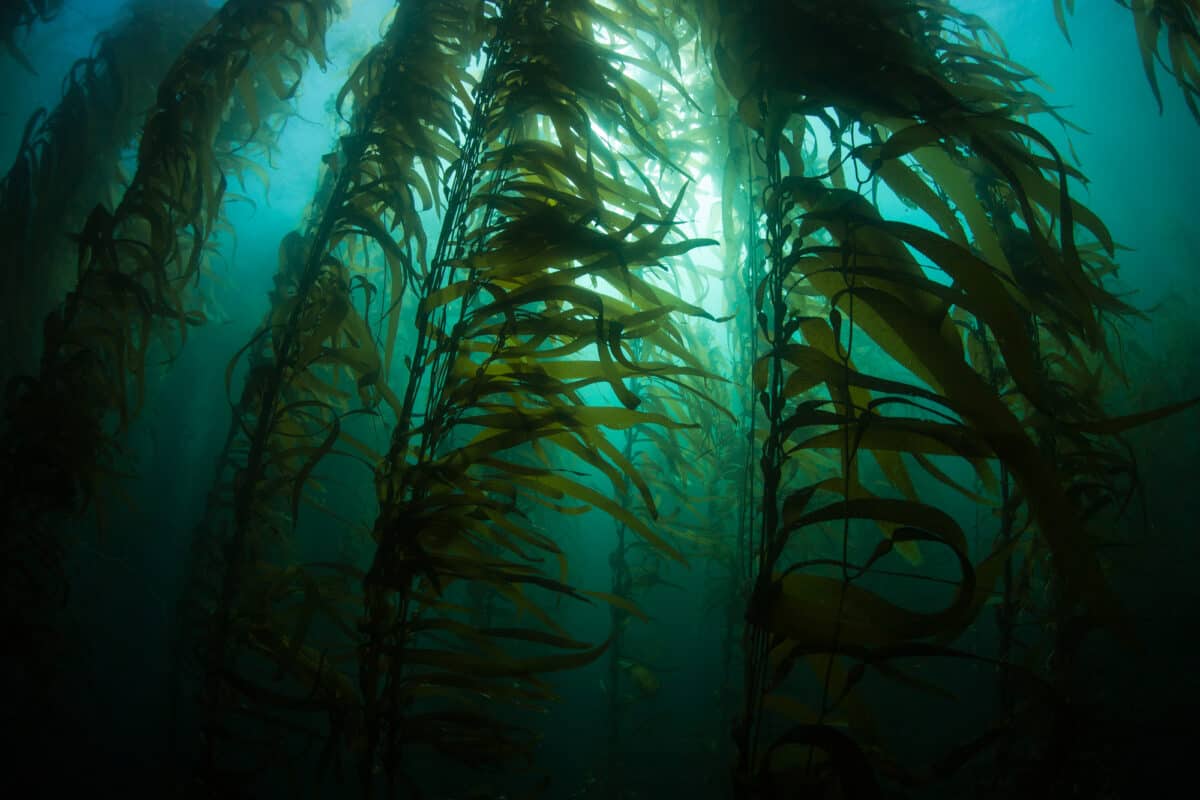Kelp forests are submerged marine ecosystems dominated by towering brown algae that are crucial biogenic entities, nurturing a diverse and interconnected host of marine life. These underwater habitats, stretching along 25% of coastlines worldwide, play a pivotal role in maintaining the health and balance of coastal ecosystems. At the heart of these submerged forests lie intricate food webs, supported by the kelp plants that serve as both shelter and sustenance for a myriad of marine organisms.
This article sheds light on some key players living within kelp forest ecosystems. From microscopic invertebrates to apex predators, each organism is intricately entwined with the kelp’s life cycle and structure.
1. Sea Urchins
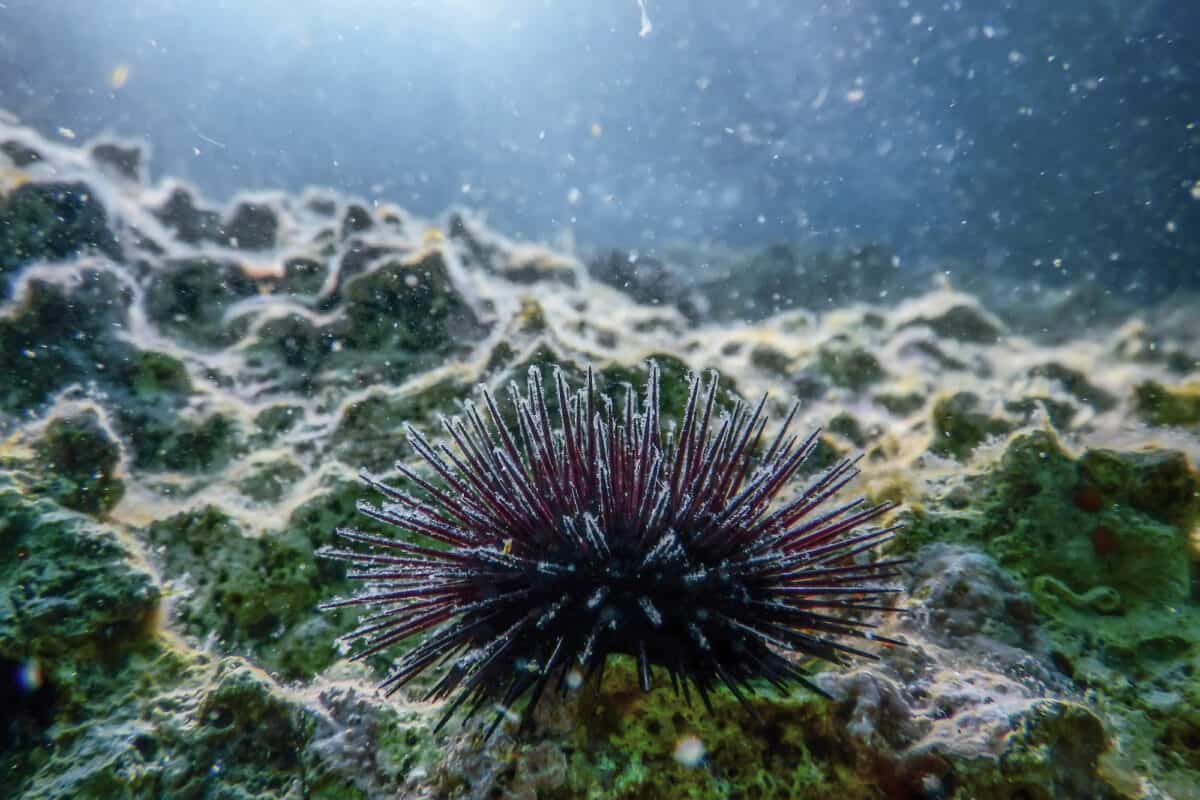
Sea urchins inhabit kelp forest habitats globally and play a crucial role by grazing on algae and clearing space for young algae and other invertebrates to colonize. However, when an ecosystem becomes unbalanced, the sea urchins can be left to graze unchecked by predators. An example of this occurred in Northern California which recently experienced an exponential rise in purple sea urchins after their primary predator, the sunflower sea star, succumbed to a wasting disease. This fall in their main predator allowed these urchins to flourish and decimate populations of local bull kelp. Ninety-six per cent of the region’s kelp has since disappeared, leaving urchin barrens in their wake.
2. Crabs and lobsters
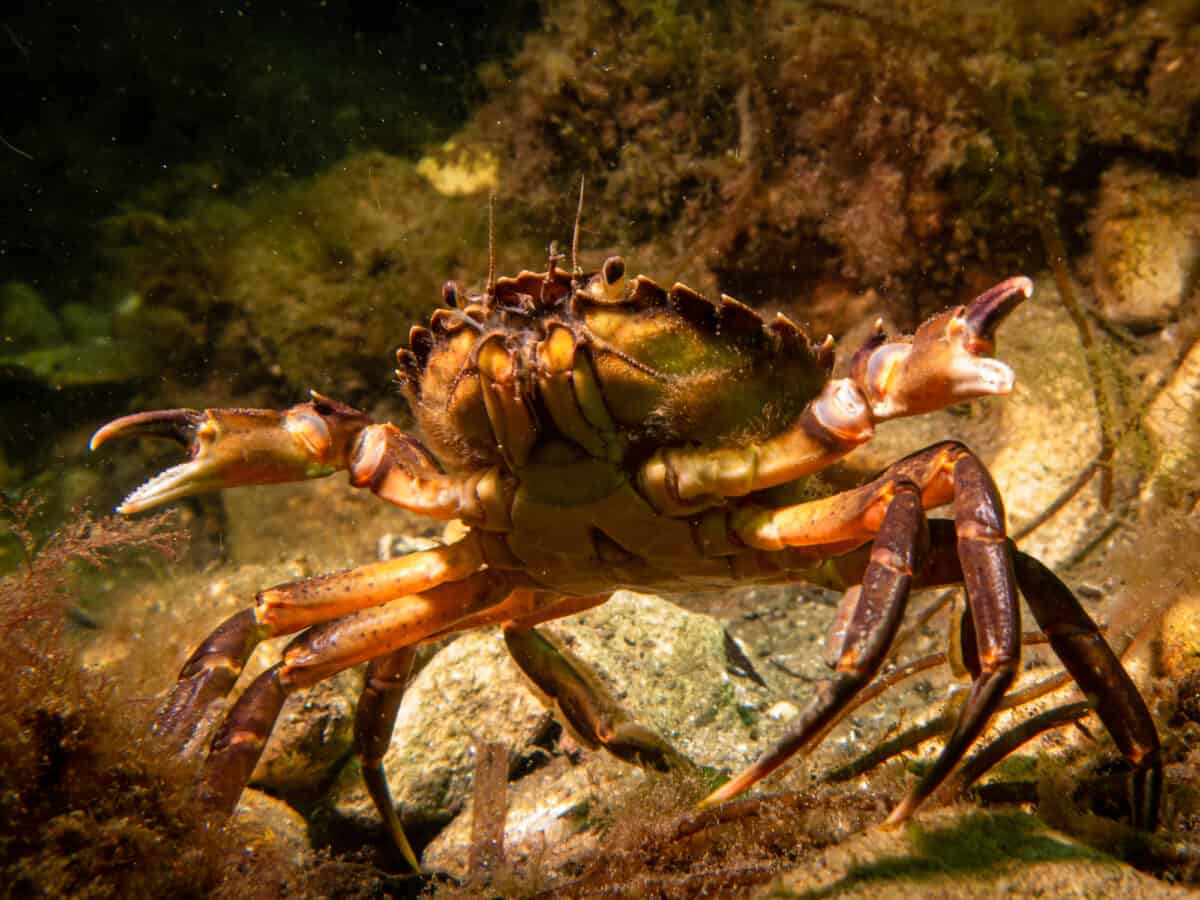
Crabs and lobsters serve as key predators in these ecosystems. By preying on kelp-consuming species such as sea urchins, they maintain marine biodiversity and prevent overgrazing of kelp. This predatory role is crucial for preserving the structural integrity of these underwater forests. In Tasmania, large rock lobsters are the only effective predator against the long-spined sea urchin, a species known for damaging kelp plants. Their presence helps prevent these ecosystems from degrading into barren habitats.
3. Octopuses
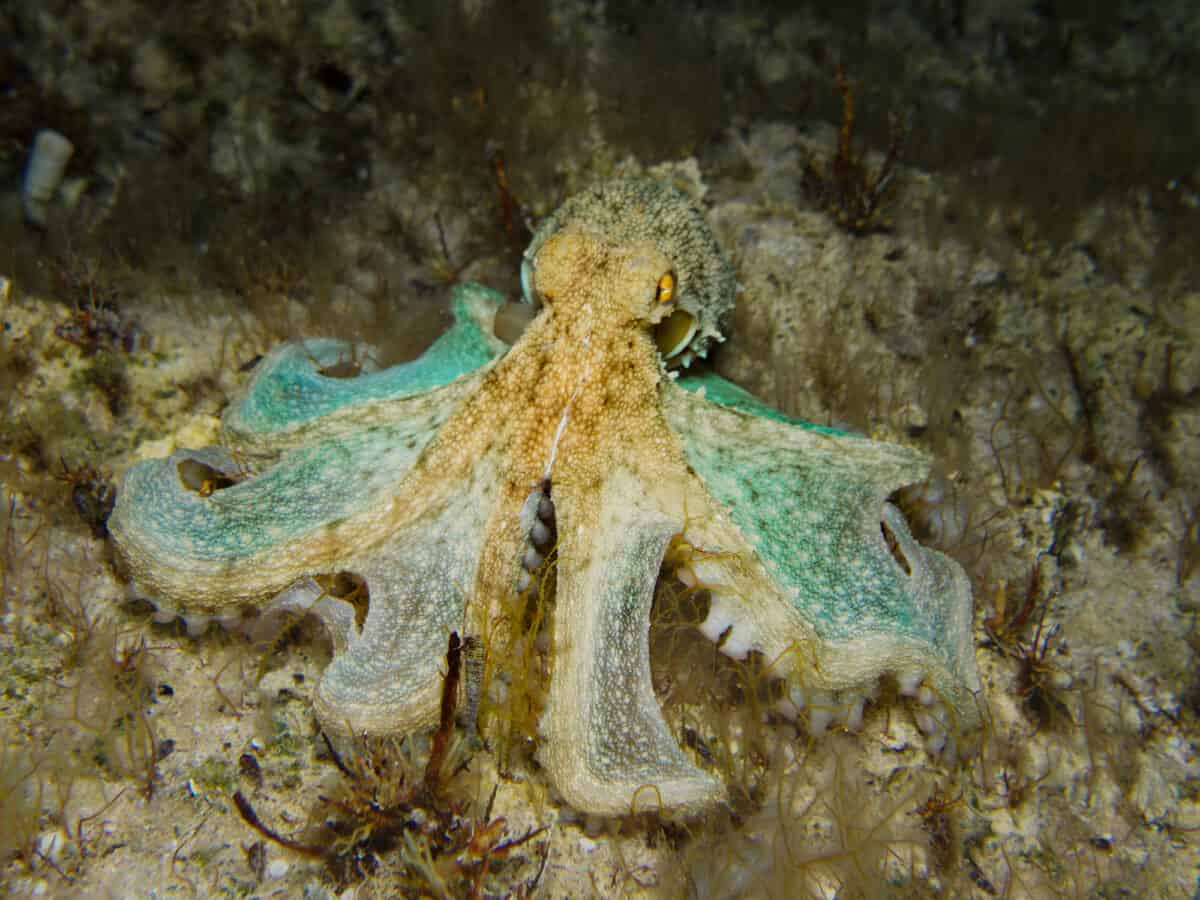
Octopuses are another fascinating group of creatures residing in kelp forests. They are known for their remarkable intelligence and adaptability. In these ecosystems, octopuses use the dense kelp as cover to ambush prey and as a shelter from predators. Their ability to blend into their surroundings makes them adept at navigating and thriving within the complex structures of kelp forests. Octopuses contribute to the ecosystem’s balance by preying on various species, helping to maintain the diversity and health of the kelp forest community.
Visit https://seachangeproject.com/ for more info
4. Sharks
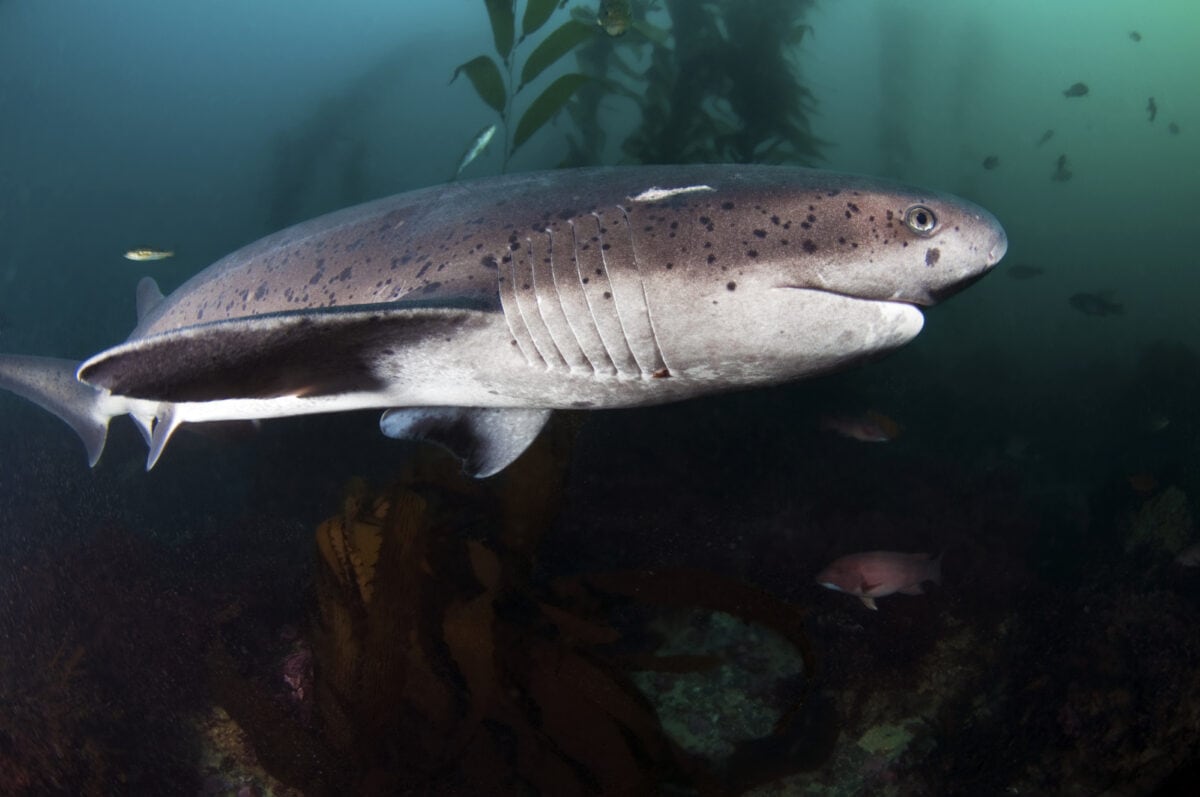
Sharks, in particular catsharks and leopard sharks, are also associated with kelp forests. These smaller shark species depend on the forests for shelter and hunting. Larger sharks have also been known to use kelp as a refuge from orcas. Contrary to previous beliefs that these forests were off-limits to large sharks, recent research has unveiled that great white sharks actively navigate and hunt within these dense underwater forests. They are not deterred by the kelp but instead move through it, even pursuing prey such as seals within these environments.
5. Sea Lions and Seals
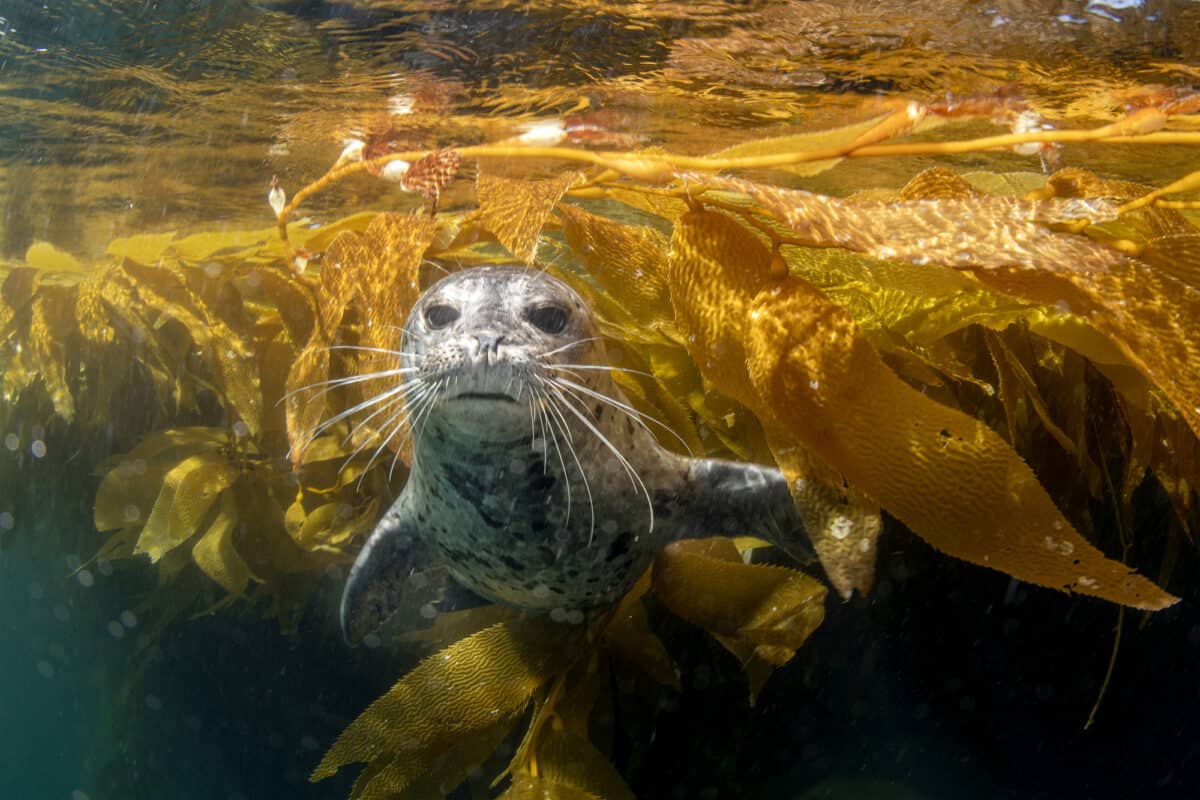
Seals are integral components of kelp forest ecosystems. As residents of these underwater forests, which can be found along much of the west coast of North America, they contribute significantly to the ecological balance. Harbor seals, for instance, feed on a variety of marine life such as squid, crustaceans, fish, and molluscs found within these forests. Their foraging habits play a crucial role in maintaining species diversity and the overall productivity of these ecosystems. These mammals use the dense kelp canopies for protection against predators and as a haven for their young. The presence of seals in kelp forests is indicative of a healthy marine environment, as these forests are known to support a higher diversity of life compared to many other ocean communities.
6. Sea Otters
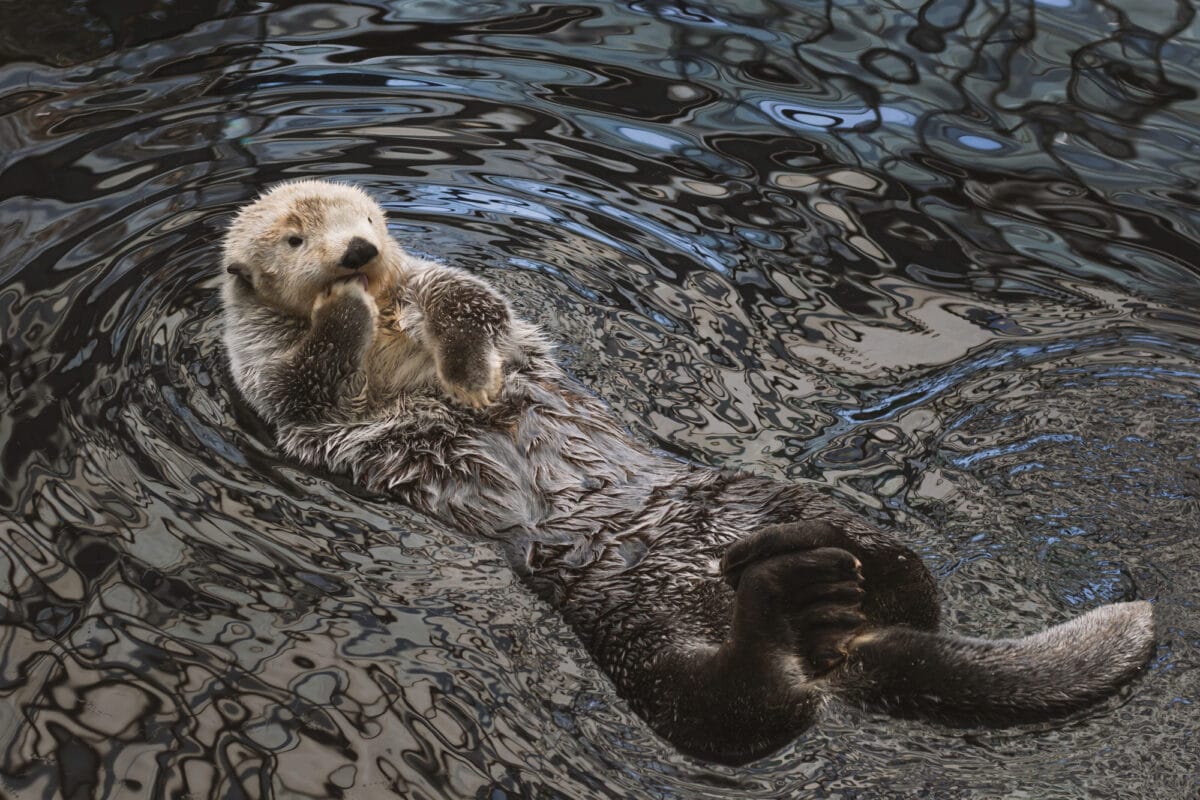
Sea otters are keystone species in kelp forest ecosystems, playing a critical role in their health and stability. As top predators, they are particularly renowned for their impact on controlling sea urchin populations. By preying on sea urchins, sea otters prevent these creatures from overgrazing on kelp, thus maintaining the forest’s structural integrity. The loss of sea otters in some regions has led to unchecked sea urchin populations, resulting in the devastation of kelp forests and the creation of urchin barrens.
Conclusion
Kelp forests are not just spectacular underwater landscapes but are vital ecosystems teeming with a rich diversity of marine life. Each species, from the tiny sea urchin to the playful sea otter, plays a significant role in maintaining the delicate balance of these submerged forests. Their interactions, whether as predator or prey, contribute to the health and stability of the kelp forests. The article highlights the interdependence of these species and the kelp, emphasizing the importance of conserving these unique habitats. The preservation of kelp forests is crucial, not only for the myriad of species they support but also for the broader health of our oceans and planet.
What do you think about ‘animals in kelp forests? Leave a comment below.
Thank you for following along with this article – Animals That Live In Kelp Forests.
You may also like:
- The Small Sharks of South Africa’s Underwater Kelp Forests
- Why Whales Wear Kelp Hats? Scientists Have Uncovered The Truth Behind This Bizarre Behaviour
- Sharks That Hold Their Breath
Join our Forum for free today!

- Shocking Survey Results of only 718 Snow Leopards Identified in India - July 18, 2024
- Do Octopuses Punch Fish For No Reason? - July 5, 2024
- Brave Farm Animals Save Chicken Friend FromHawk - June 30, 2024

